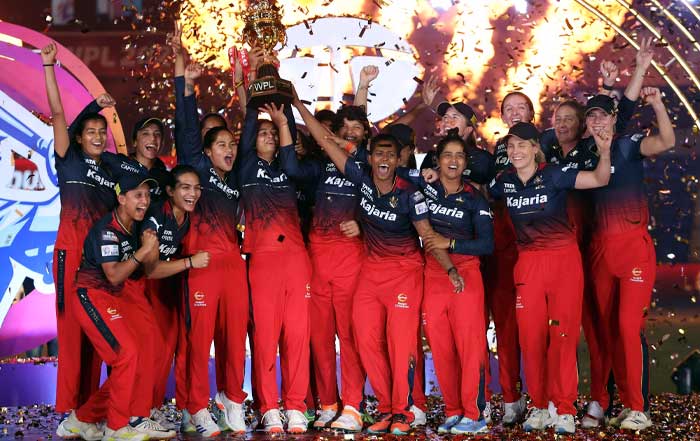In the fast-paced, competitive world of athletics, both amateur and professional athletes face an ever-present risk of sports-related injuries. Despite advances in training techniques, medical knowledge, and performance technology, injuries remain a central concern that impacts careers, business investments, and the broader health landscape. Today, with the rise of elite-level competitions, youth academies, digital fitness platforms, and global participation in recreational sports, the question of how to prevent and recover from sports injuries has become a critical issue not only for players but also for brands, organizations, and healthcare systems. Platforms like Sportsyncr now serve as a bridge between sports culture, fitness, and business, ensuring that conversations around prevention and recovery remain deeply connected to the wider sporting ecosystem.
Understanding the Nature of Sports Injuries
Sports injuries can range from acute traumatic events such as fractures, ligament tears, and concussions to chronic overuse conditions like tendinitis, stress fractures, and lower back pain. Each type of injury requires different preventive measures and rehabilitation protocols. In disciplines as varied as football, tennis, cricket, athletics, and basketball, athletes face unique stresses that predispose them to specific injuries. For example, anterior cruciate ligament (ACL) tears are a well-documented challenge in football and basketball, while repetitive stress injuries plague runners, swimmers, and gymnasts. Understanding the mechanics of these injuries provides a foundation for developing more targeted prevention and recovery strategies. For more insights into injury risks in modern sports, readers can explore sports data and analysis.
The Global Cost of Sports Injuries
The economic and social costs of sports injuries extend well beyond the field. For professional leagues and clubs, the absence of a key player due to injury can lead to millions in lost revenue, diminished sponsorship opportunities, and shifts in fan engagement. On a public health level, injuries contribute to increased healthcare costs and lost productivity, particularly among young adults whose professional and academic trajectories may be disrupted. According to data from organizations such as the World Health Organization, musculoskeletal injuries remain a leading cause of disability worldwide, underscoring the urgency of effective prevention strategies. Businesses, healthcare providers, and governments are increasingly recognizing the financial stakes, which explains the growing investment in injury prevention research and rehabilitation technologies. To track the broader impact on sports and society, sports business analysis offers critical context.
Advances in Preventive Training
Preventive strategies in sports are now grounded in evidence-based practices that integrate sports science, biomechanics, and digital innovation. Modern strength and conditioning programs emphasize not only performance but also resilience, targeting weak points in the kinetic chain that often predispose athletes to injury. Warm-up protocols such as the FIFA 11+ have demonstrated measurable reductions in lower-limb injuries in soccer. Similarly, balance training and proprioceptive exercises have been shown to lower the risk of ankle sprains. Beyond traditional physical conditioning, technology-driven approaches such as motion capture analysis, wearable sensors, and AI-driven predictive analytics are transforming prevention by identifying patterns of stress and fatigue before they result in injury. For a deeper dive into technology’s role in safeguarding athletes, see sports technology innovations.
The Role of Nutrition and Recovery Science
Injury prevention is not confined to physical training; nutrition and recovery science play equally vital roles. Proper fueling with anti-inflammatory foods, adequate hydration, and supplementation of key nutrients such as omega-3 fatty acids, vitamin D, and collagen peptides are increasingly recommended to maintain tissue health and reduce injury risks. Recovery practices—once limited to rest and physiotherapy—now include cryotherapy, infrared saunas, compression garments, and even hyperbaric oxygen therapy. Companies like Therabody and NormaTec have developed consumer-friendly recovery tools that are now widely used by both elite athletes and everyday fitness enthusiasts. These methods not only accelerate healing but also provide athletes with an edge in maintaining consistent performance schedules. For more insights into fitness recovery methods, sportsyncr’s fitness coverage provides expert-driven perspectives.
Rehabilitation Innovations in Sports Medicine
The landscape of sports rehabilitation has transformed in recent years, with 2025 witnessing unprecedented integration of technology, interdisciplinary care, and athlete-centered approaches. Rehabilitation is no longer viewed as a passive process of rest and gradual reintroduction to activity; instead, it is now a dynamic, science-driven journey tailored to each athlete’s unique physiology, psychology, and performance goals. Sports medicine clinics across the United States, Europe, and Asia are embedding advanced tools such as robotic-assisted therapy, 3D-printed orthopedic supports, and neuromuscular stimulation devices into mainstream protocols. These innovations allow for more precise targeting of injured tissues, faster neuromuscular re-education, and measurable progress tracking.
One of the most significant breakthroughs has been the use of AI-driven rehabilitation platforms. Companies like Zimmer Biomet and SWORD Health have pioneered digital rehabilitation tools that use motion sensors and real-time feedback to monitor patient exercises, ensuring correct form and reducing the risk of re-injury. This technology has proven particularly valuable in remote or underserved regions, where access to in-person physical therapy may be limited. By integrating digital platforms into recovery, athletes can remain connected to healthcare providers while enjoying personalized rehabilitation programs designed to optimize long-term performance. To learn more about how innovation drives performance, see technology in sports.
Interactive Sports Injury Prevention & Recovery Timeline
Phase 1: Prevention (Ongoing)
Modern Preventive Training:
- Evidence-based strength & conditioning programs
- FIFA 11+ warm-up protocols (30-50% injury reduction)
- Balance training and proprioceptive exercises
- Motion capture analysis and wearable sensors
Technology Integration:AI-driven predictive analytics, load management systems
Phase 2: Injury Response (Immediate)
Immediate Assessment:
- AI-enhanced diagnostic imaging (MRI, ultrasound)
- Comprehensive injury classification
- Pain management and initial stabilization
- Psychological support integration
Cost Impact:Professional teams face millions in lost revenue; global healthcare costs increase
Phase 3: Recovery (Weeks to Months)
Advanced Rehabilitation:
- Robotic-assisted therapy and 3D-printed supports
- Digital rehabilitation platforms with real-time feedback
- Cryotherapy, infrared saunas, hyperbaric oxygen
- Nutrition optimization (anti-inflammatory foods, omega-3s)
Mental Health:Sports psychology, cognitive-behavioral therapy, mindfulness
Phase 4: Return to Play (Critical Decision)
Evidence-Based Protocols:
- Objective measures: strength testing, balance assessment
- Movement analysis and joint loading monitoring
- Machine learning re-injury risk prediction
- Athlete confidence and psychological readiness
Future Focus:VR/AR rehabilitation, genetic predisposition analysis
Key Statistics & Innovations
with FIFA 11+
Rehabilitation Era
per Injury
The Psychological Dimension of Injury Recovery
Sports injuries are not purely physical events; they represent a profound psychological challenge that can alter an athlete’s identity, motivation, and career trajectory. Psychological resilience, therefore, has become an essential pillar of modern recovery. The fear of re-injury, the frustration of lost playing time, and the uncertainty of future performance are issues that often weigh heavily on athletes, from youth competitors to professionals.
Sports psychologists are increasingly integrated into rehabilitation teams, offering cognitive-behavioral therapy, visualization techniques, and mindfulness strategies to help athletes maintain focus and confidence. Research from institutions like Harvard Medical School and Stanford University has highlighted the link between mental resilience and physical recovery rates, showing that athletes who adopt positive coping mechanisms return to play sooner and with greater stability. Platforms such as sportsyncr culture insights emphasize the importance of mental wellness in sports, underscoring that prevention and recovery strategies must address both body and mind.
Return-to-Play Protocols: Balancing Risk and Readiness
The decision of when an athlete should return to competition is one of the most complex challenges faced in sports medicine. Too early, and the risk of re-injury is significantly heightened; too late, and the athlete may lose conditioning or competitive advantage. Modern return-to-play (RTP) protocols now rely on a combination of objective measures—such as strength testing, balance assessment, and movement analysis—alongside subjective measures like athlete confidence and readiness.
Organizations such as FIFA, the NBA, and the International Olympic Committee have developed comprehensive RTP frameworks that standardize decision-making and prioritize long-term athlete welfare. Technology plays a central role here as well: wearable devices track joint loading and symmetry, while machine learning models predict re-injury risk based on historical data. These innovations ensure that RTP is not a guesswork exercise but a carefully calibrated decision-making process. For a broader view of sports and global frameworks, readers can explore worldwide sports coverage.
The Expanding Role of AI and Data Analytics
Artificial intelligence is redefining how injuries are prevented, diagnosed, and managed. Predictive analytics platforms are now capable of processing data from GPS trackers, wearables, and biometric monitoring to identify early signs of overtraining, fatigue, or biomechanical inefficiency. Companies like Catapult Sports and Hawk-Eye Innovations are leading the charge, offering systems that flag high-risk patterns before they lead to injury. This proactive approach aligns with a global shift toward prevention as the most cost-effective and impactful strategy for athlete health.
AI is also being employed in diagnostic imaging, with machine learning models improving the accuracy of MRI and ultrasound interpretations, ensuring that injuries are detected at earlier stages. Moreover, rehabilitation programs are increasingly adaptive, with algorithms adjusting exercises based on real-time progress. These developments not only reduce human error but also create a more personalized recovery journey. For deeper analysis on AI’s transformative role, see sportsyncr science insights.
Global Health Policies and Injury Management
Sports injuries do not exist in isolation; they intersect with global health policy, workplace productivity, and social well-being. Governments and healthcare systems are increasingly investing in sports medicine infrastructure, recognizing that sports injuries have significant economic and public health implications. In countries like Germany and Australia, national sports institutes have partnered with universities to standardize injury prevention education across youth and professional levels. Similarly, in the United States, organizations like the National Institutes of Health (NIH) fund extensive research into musculoskeletal health, emphasizing community-level injury prevention initiatives.
International bodies such as the World Health Organization and the International Paralympic Committee are also advancing policies that promote inclusion and long-term care for athletes with injuries, ensuring that the global conversation around recovery extends beyond elite sport into recreational and adaptive contexts. For the latest updates on these developments, sportsyncr news coverage provides business and policy insights.
Case Studies of Successful Injury Prevention Programs
FIFA 11+ and Global Football
One of the most well-documented case studies in injury prevention is the FIFA 11+ program, a structured warm-up routine designed to reduce lower-limb injuries in football. Implemented across youth and professional levels, this program has been scientifically proven to decrease rates of ACL tears, hamstring strains, and ankle sprains by as much as 30–50%. What sets the FIFA 11+ apart is its scalability; it can be integrated seamlessly into daily training sessions without requiring specialized equipment. By educating coaches and athletes alike, it has become a cornerstone of football’s approach to injury prevention. Insights like these demonstrate why structured and evidence-based methods are essential to sustainable sports development, a topic explored further in sports training and fitness.
The NBA and Load Management
In the NBA, load management has become both a controversial and transformative approach to minimizing injuries among professional basketball players. By monitoring player minutes, optimizing rest schedules, and leveraging biometric data, franchises aim to extend careers and maintain peak performance during critical playoff games. While fans and broadcasters sometimes criticize this strategy for reducing star player availability during regular-season games, the underlying science emphasizes long-term joint preservation and reduced risk of overuse injuries. The NBA’s case underscores how advanced analytics and policy adjustments can alter the injury landscape in high-stakes professional environments.
Cricket Australia’s Fast Bowler Program
Cricket Australia provides another compelling example through its Fast Bowler Management Program, designed to address the high incidence of stress fractures and soft-tissue injuries among bowlers. By closely monitoring workload, biomechanical efficiency, and strength conditioning, the program has significantly reduced injuries in one of cricket’s most injury-prone roles. The initiative combines data analysis, strength training, and rest protocols to balance the demands of international schedules with athlete health. This structured approach illustrates the benefits of sport-specific injury management strategies and highlights the importance of integrating scientific expertise into traditional coaching practices. For further global sports insights, sportsyncr sports coverage tracks such programs worldwide.
Sponsorship, Brands, and Athlete Health
The business of sports is increasingly tied to the health and availability of athletes. Brands and sponsors recognize that injuries not only affect performance but also impact advertising campaigns, endorsements, and market reach. Companies such as Nike, Adidas, and Under Armour now invest heavily in injury prevention research, funding studies in biomechanics, footwear technology, and wearable devices that aim to reduce injury risk while enhancing performance.
For example, Nike’s Sport Research Lab has pioneered shoe designs that redistribute pressure to lower stress on joints, while Adidas has partnered with elite clubs to integrate smart insoles that track biomechanical patterns in real time. These corporate investments are driven by the understanding that athlete availability directly correlates with brand visibility and revenue. The sponsorship ecosystem has evolved, with organizations increasingly prioritizing athlete well-being as part of corporate responsibility and long-term brand trust. To learn more about this intersection, visit sports sponsorship coverage.
Cross-Industry Collaborations for Athlete Safety
Collaboration across industries has become essential in advancing athlete safety. Partnerships between universities, healthcare institutions, sports organizations, and technology companies are yielding groundbreaking solutions. For instance, Stanford University has collaborated with Apple on wearable devices that measure cardiac stress and physical exertion, providing early warning signs of overtraining. Similarly, Manchester City FC has partnered with Cisco to enhance digital health monitoring across its player base, reflecting how telecommunications and sports converge to safeguard athlete health.
Governments also play a role in facilitating these collaborations. In Germany, public-private partnerships fund injury prevention programs in youth academies, while in Singapore, national initiatives encourage tech start-ups to develop sports health solutions. These cross-industry alliances highlight a growing recognition that athlete safety is not the responsibility of coaches and doctors alone but requires multi-sector investment and innovation. For broader coverage on how such collaborations impact the sports world, see sportsyncr business analysis.
Future Outlook: Injury Prevention and Recovery Beyond 2025
Looking ahead, the future of sports injury prevention and recovery is defined by a shift from reactive care to proactive monitoring. Advances in genomics and personalized medicine are beginning to enter the mainstream, enabling athletes to understand their genetic predispositions to certain injuries and tailor training accordingly. This knowledge will be particularly transformative in elite sports, where marginal gains in injury prevention can determine the difference between success and failure.
The integration of virtual reality (VR) and augmented reality (AR) into rehabilitation is another emerging frontier. By immersing athletes in controlled virtual environments, therapists can replicate game scenarios, rebuilding both physical conditioning and cognitive confidence simultaneously. This innovation has particular promise in contact sports where psychological barriers often slow the return-to-play process.
Environmental and social factors will also play an increasing role. As climate change alters training environments and increases heat-related risks, sports organizations will be forced to adopt more rigorous monitoring protocols to prevent injuries associated with dehydration, heatstroke, and fatigue. For readers interested in how environmental dynamics influence sport, sportsyncr environment coverage explores these trends in depth.
Conclusion: Building a Culture of Long-Term Athlete Health
By 2025, preventing and recovering from sports injuries is no longer just about immediate medical interventions; it is about building a culture that values athlete longevity, health, and holistic well-being. From grassroots programs to elite professional leagues, the emphasis has shifted toward sustainable performance—where prevention is prioritized, recovery is optimized, and psychological resilience is nurtured alongside physical rehabilitation. The growing involvement of technology, business investment, and global health policy ensures that this issue is no longer confined to locker rooms and clinics but is now central to how societies, economies, and cultures engage with sport.
As athletes, fans, and businesses continue to shape the future of sports, the ultimate goal remains clear: to create a world where athletes can perform at their best, minimize injury risks, and recover stronger than ever when setbacks occur. For ongoing coverage of the intersection of sports, health, fitness, culture, and business, readers can turn to Sportsyncr, a platform dedicated to bringing expertise, authority, and trustworthiness to every aspect of the sporting experience.








